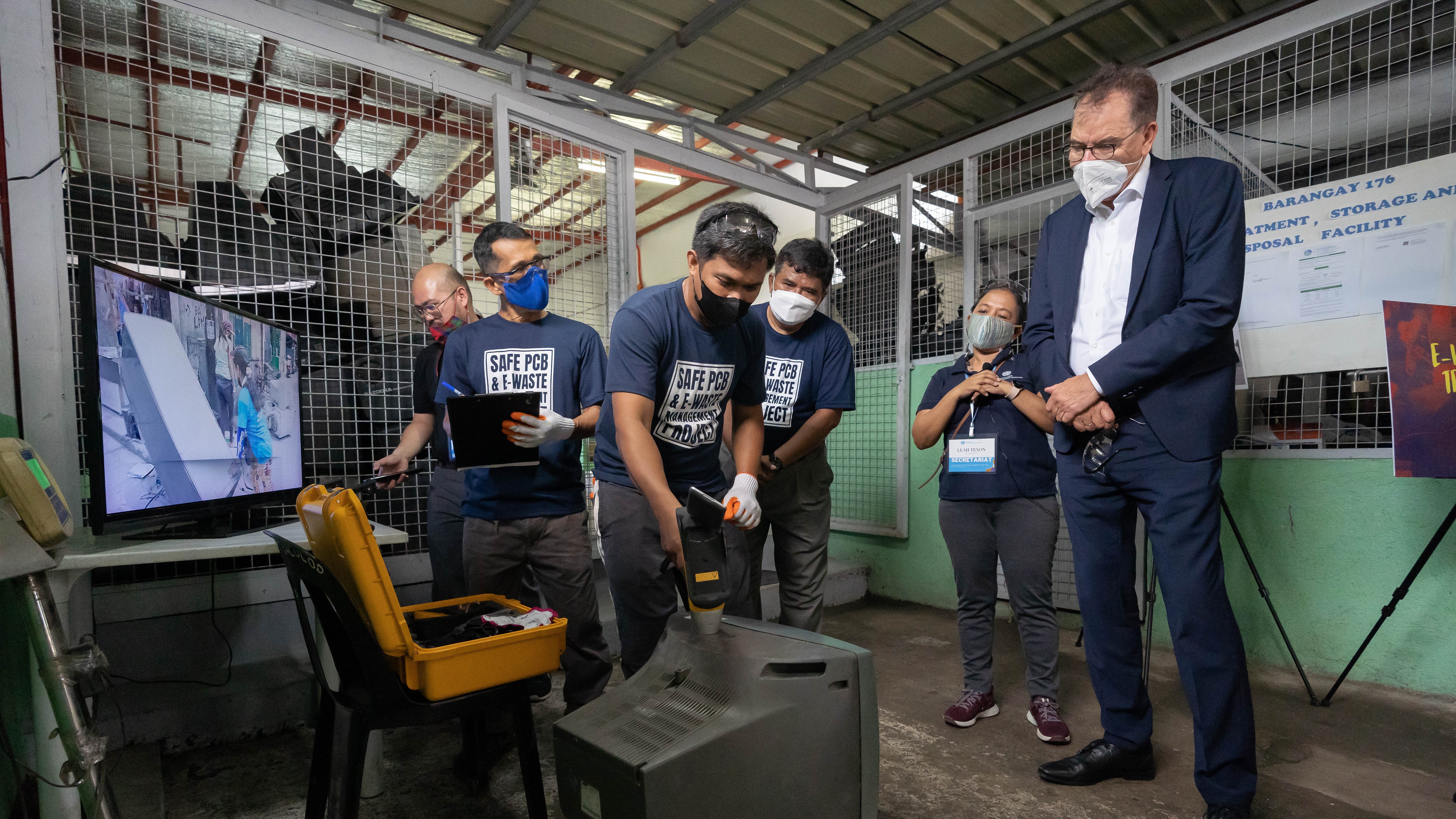The Philippines: making money making e-waste safe
28 September 2022

MANILA - The United Nations’ most recent Global E-Waste Monitor report estimates that electronic waste generated worldwide will exceed 74 million metric tonnes by 2030.
Higher consumption of electrical and electronic equipment, as well as short life cycles and limited repair options, will drive the increase.
According to the report, the Philippines is among Southeast Asia's top e-waste generators. The country is estimated to have generated 3.9 kg of e-waste per capita in 2019.
This is not only a major health hazard for local people. Pollution from e-waste can also damage the environment and the climate.
But e-waste is not all bad news. If collected, stored and handled correctly, it can be a lucrative source of precious metals.
On a recent visit to the Philippines, Gerd Müller, Director General of the United Nations Industrial Development Organization (UNIDO), visited a treatment, storage and disposal (TSD) facility for e-waste set up by UNIDO and the Philippines’ Department of the Environment and Natural Resources. The TSD facility is located in Barangay Bagong Silang in Caloocan City in metropolitan Manila.
Informal e-waste recycling workers in the neighbourhood collect unwanted electrical and electronic equipment, such as computers, TV-sets, fridges and cell phones from households or from sites where these items have been dumped.
They bring the e-waste to the facility where the dangerous activity of dismantling the items and extracting reusable metals can be done in a safe and organized manner.
Practical workshops provide recyclers with the necessary skills on how to disassemble parts, according to international safety and security standards, and on the proper use of modern dissembling technology and tools, and with protective equipment.
UNIDO’s Müller thanked the Filipino authorities for the “great collaboration” and the Global Environment Facility (GEF) for its financial support.
He said, “The training here is a great example of how, with one project, we can find solutions to many issues with one action. We see skills development and the creation of green jobs. We see international technology and knowledge transfer. We see a circular economy approach. And we see protection of the environment that we all share. This is the innovative approach. These are the solutions we need!”